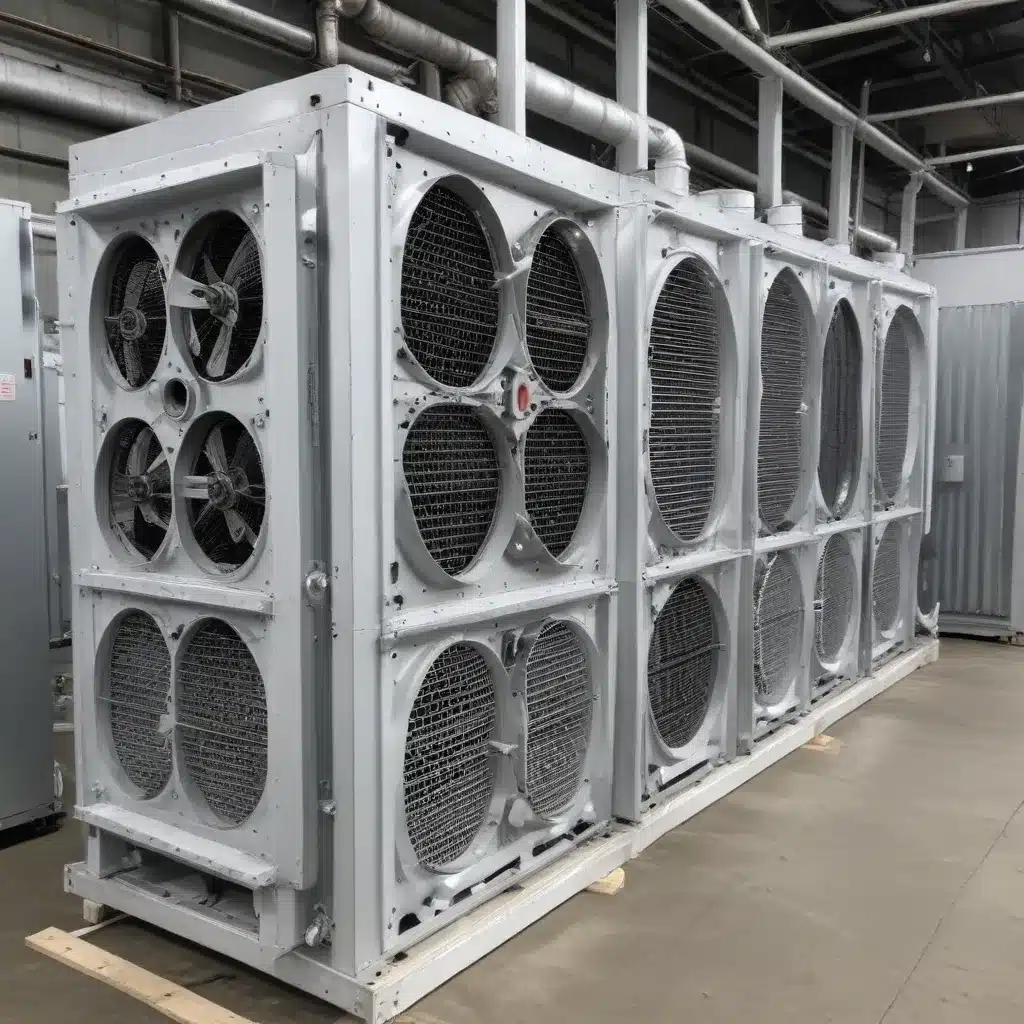
In the ever-evolving world of industrial heating and cooling, air-cooled heat exchangers have emerged as a preferred choice for their unparalleled efficiency, versatility, and environmental sustainability. As experts in the field, we’ll delve into cutting-edge techniques and insights that can help you optimize the performance and longevity of your air-cooled heat exchangers, ultimately leading to enhanced energy savings and reduced environmental impact.
Mastering Air-Cooled Heat Exchanger Design for Maximum Efficiency
Designing an air-cooled heat exchanger that operates at peak efficiency requires a deep understanding of heat transfer principles and the latest advancements in materials and fabrication techniques. One key factor to consider is the heat exchanger’s fin design, as it plays a crucial role in enhancing heat transfer rates. The innovative “G-fin” design, for instance, has gained widespread popularity due to its superior thermal performance and energy-saving capabilities.
Compared to traditional fin designs, G-fins increase the surface area for heat transfer, allowing for more efficient heat dissipation. This design feature is particularly well-suited for high-temperature and high-pressure applications, making it a preferred choice in industries such as oil and gas, petrochemicals, and power generation. By optimizing the airflow and minimizing resistance, G-fins contribute to significant energy savings, making air-cooled heat exchangers an increasingly attractive option for sustainable thermal management.
Another important design consideration is the choice of materials. Stainless steel, with its exceptional corrosion resistance, durability, and thermal conductivity, has emerged as a standout material for air-cooled heat exchangers. This robust construction not only enhances the longevity of the equipment but also reduces the need for frequent maintenance, further contributing to the overall sustainability of the system.
Enhancing Air-Cooled Heat Exchanger Performance and Reliability
Maintaining peak performance and reliability in air-cooled heat exchangers requires a comprehensive approach that encompasses both design and ongoing maintenance practices. One innovative solution that has gained traction is the use of induced draft air-cooled heat exchangers. These systems feature a fan arrangement that improves airflow and heat exchange rates, particularly in high-temperature environments.
By positioning the fan in a way that reduces hot air recirculation within the tube bundle, induced draft air-cooled heat exchangers achieve enhanced efficiency and durability. Additionally, the protective hood design shields the equipment from environmental factors, such as rain and hailstorms, minimizing the need for frequent maintenance and reducing downtime.
To further optimize the performance and reliability of air-cooled heat exchangers, regular maintenance and preventive care are essential. This includes activities such as routine cleaning, inspection, and proactive replacement of wear-and-tear components. By partnering with experienced service providers, you can ensure that your air-cooled heat exchangers maintain peak efficiency and minimize the risk of unexpected breakdowns, ultimately extending their lifespan and enhancing sustainability.
Addressing the Challenges of Noise and Water Scarcity
One of the key challenges associated with air-cooled heat exchangers is the potential for noise pollution, particularly in sensitive environments or residential areas. Manufacturers have responded to this concern by prioritizing fan design and system construction to meet stringent noise regulations without compromising performance.
Innovative solutions, such as the use of noise-dampening materials and strategic fan placement, have helped to mitigate the noise issue, making air-cooled heat exchangers a more viable option in a wider range of applications. Additionally, advancements in fan technology have led to quieter and more efficient air movement, further enhancing the suitability of these systems in noise-sensitive settings.
Another pressing concern in many regions is the scarcity of water resources, a critical factor in the selection and deployment of cooling systems. Air-cooled heat exchangers offer a sustainable solution by eliminating the need for water, making them an ideal choice in areas facing water shortages or where water conservation is a priority. By leveraging the inherent advantages of air-based cooling, air-cooled heat exchangers contribute to the responsible management of water resources while meeting the thermal demands of various industries.
Unlocking the Potential of Air-Cooled Heat Exchangers in Data Centers
The rapid growth of the data center industry has presented a unique opportunity for air-cooled heat exchangers to shine. As data centers grapple with the challenge of efficiently cooling high-density server environments, air-cooled systems have emerged as a preferred solution, addressing both sustainability and energy efficiency concerns.
Cutting-edge air-cooled heat exchanger designs tailored for data centers have been developed to handle the ever-increasing thermal loads generated by advanced computing infrastructure. These specialized systems not only reduce water consumption but also minimize the use of harmful refrigerants, aligning with the industry’s sustainability goals.
Furthermore, the modular and scalable nature of air-cooled heat exchangers makes them well-suited for the dynamic nature of data center operations, allowing for seamless integration and easy maintenance. As the data center industry continues to evolve, the role of air-cooled heat exchangers in providing efficient, reliable, and environmentally friendly cooling solutions will only continue to grow.
Conclusion: Embracing the Future of Air-Cooled Heat Exchanger Technology
In the ever-changing landscape of industrial heating and cooling, air-cooled heat exchangers have emerged as a beacon of innovation, sustainability, and efficiency. By leveraging cutting-edge design techniques, advanced materials, and proactive maintenance practices, you can unlock the full potential of these versatile systems, driving remarkable improvements in energy savings, environmental impact, and operational reliability.
As we look to the future, the air-cooled heat exchanger industry is poised for continued growth, with advancements in areas such as noise reduction, water conservation, and specialized applications like data centers. By embracing these cutting-edge techniques and insights, you can position your organization as a leader in sustainable thermal management, contributing to a greener, more energy-efficient future.
To learn more about the latest advancements in air-cooled heat exchanger technology and how they can benefit your operations, visit https://www.aircooledheatexchangers.net/. Our team of experts is here to help you navigate the evolving landscape of thermal engineering and unlock new levels of efficiency, reliability, and sustainability.

